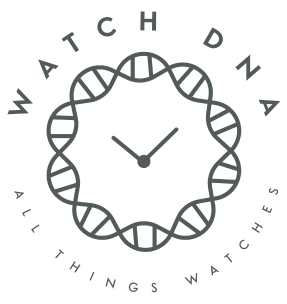BASIC FUNCTIONALITY
The main spring is a source of stored energy, and the oscillating escapement assembly regulates the rate at which that energy is released. Because the gears in the “wheel train,” which consists of the mainspring and escapement, move at various speeds, the watch is able to “tell time.”
MAINSPRING

TRAIN OF WHEELS

BALANCE WHEEL

BLOG TO READ – WATCH MOVEMENTS 101
CAN’T TELL A QUARTZ FROM AN AUTOMATIC? HERE’S WHAT YOU NEED TO KNOW
A watch has many parts, but the most important of them by far is its movement. A movement is composed of
many pieces (hundreds in some cases), and it is the driving force behind your watch, moving the hands and
keeping time accurately day in, and day out. While watch technology has been eclipsed by smartphones and
other digital devices in recent years, it’s still pretty fascinating when you get down to it – especially
considering that people were making accurate watches long before they could design them on computers. Not
all movements, however, are alike.
Discover how to differentiate between the most common kinds and appreciate the merits of each.
READ MORE
,
Written by Jeremy Freed
TIME SETTING & WINDING
Adjusting the time requires pulling out the crown and winding the watch requires pushing it in. Depending on whether you're pulling out or pushing in, a separate set of gears will be engaged.
HANDS
In conjunction with a dial, hands indicate what time it is. Hands indicate the hours, minutes, and frequently
the seconds. Hands come in a variety of styles from simple batons, swords, and pointers, to ornate designs
with curves and colors.
CROWN
The crown allows the watch to be manually wound when required, when pulled out it allows the time to be set.
Watches with a date function often have a middle position between the winding position and the time setting
position which allows the date to be set as well. Waterproof watches often have a screw-down crown to prevent
it from being pulled out while being exposed to water.

MAINSPRING
A mainspring is a spring of metal used in mechanical watches and clocks. Turning the crown winds the watch,
tightening the mainspring. This is the energy source of the watch. The power is transmitted through the train of
wheels, through the escapement and gives the balance wheel a gentle push every time it oscillates to keep the
balance wheel moving back and forth, in turn regulating the time keeping of the watch.

TRAIN OF WHEELS
The train of wheels connects the mainspring through a serious of wheels connecting the mainspring and balance
spring and escapement. The various gears are designed in specific ratios to drive the hands of the watch to tell
the correct time. Watch gears are called wheels and pinions. Wheels are between the movement’s plates connected
to pivots which rotate in holes contained in the those plates which hold the watch together.

BALANCE WHEEL
The balancing wheel is protected by a jewel bearings and capstones, which are mounted in a way that absorbs
shock and protects the fine balance wheel pivots. Together with the hairspring, pallet fork and escape wheel,
they are the components which allow the watch to keep time. The balance wheel and hairspring perform the same
function as the pendulum on a wall clock.

CRYSTAL
The crystal protects the dial and hands from dust and debris, revealing the time. Although called a crystal, it
may be constructed of plastic/acrylic, mineral glass, or sapphire. Scratch resistant and durable, sapphire
crystal is the typical choice in luxury watchmaking.
To learn more and to discover what kind of sapphire crystal
Elka Watch Co.
use,
click here.

